Three times, they tried to push the herd out onto the ice, and three times, they failed. Scent alone wasn’t working. The wind dipped and swirled, and the daytime thaw and nightly freeze made the crusted snow impossibly noisy for stalking. The day was quickly turning to night and still they waited, watched, and hoped.
It was the youngest hunter who had the idea. Two hundred yards down the shoreline, a cluster of alders leaned out over the frozen lake. Those brushy trees formed a nearly perfect square with just enough room between the bases for two hunters to wait, spears and bows at the ready. The other hunters, five of them, would skirt the boggy south shore and appear in the open across the bay, 500 yards away from the elk browsing along the sandy point.
No time to waste now. Darkness was coming on quickly, and the heavy spring snow they’d expected was beginning, coming straight down now as the wind calmed. When the five hunters showed themselves, the elk lifted their heads and slowly moved down the shoreline, straight toward the natural birch blind with just enough room for two hunters.
It was nearly dark now, and they were still too far. The lead cow knew something wasn’t right. She led the herd out onto the ice, fifty yards from the alders. Close enough for arrows, but with darkness upon them, they didn’t want to track wounded elk and race wolves to the kill. That’s what happened two nights ago when they had arrowed a spike bull. The hit was slightly too high. By the time they found the kill, wolves had stripped the carcass of all but the bones. No, this time, it would have to be spears. They must anchor the elk in place. No delay, no tracking, no wolves.
The main group of elk stayed just out of spear range, about 40 feet for the experienced hunters. But one young cow lagged, drifting closer to the shore, and the lone bull was with her. The cow and the bull wandered closer to the alders. The hunters tensed. Their hearts raced. None of them had eaten much in two days, and that was only a bit of marrow from the spike they’d lost to the wolves. It would be a cold night and a colder morning for all of them if they failed. The massive bull elk, with six heavy tines on each side, was more interested in the young cow than he was in the birch trees.
At 12 yards, two spears thumped into his right shoulder blade. He tried to run but could only skid along the crusted snow as the rest of the herd, noses held high, shrieked and ran. The struggle ended quickly on the end of flint knives, and blood pooled on the surface of the frozen lake. The other hunters raced across the ice and whoops of joy and triumph echoed all the way back to the cold families huddled around a small fire in the lee of a hill a mile away.
That scene, or one like it, played out on a northern Wisconsin lake centuries ago. How do we know? Because in the summer of 2005, a youngster wading in the waters of Middle Eau Claire Lake in Bayfield County, kicked something embedded in the sandy lakebed in about four feet of water in front of Quentin and Helen Ruprecht’s Silver Beach Resort. Curiosity got the better of the young wader, and he reached down and dug it out of the sand.
It was bigger than he’d expected and heavier, too. He struggled to drag it to shore. Half an elk skull, stained with centuries of tannin and with a heavy six-point rack still attached, became an immediate sensation around the lake.
When more kids returned to the spot and rooted around in the sand, they found the other half of the skull. Then they found something even more amazing—a broken spearpoint made of jasper taconite. Now that was really something, and it didn’t take long for University of Wisconsin archaeologist Dr. Jean Hudson to hear about the find.
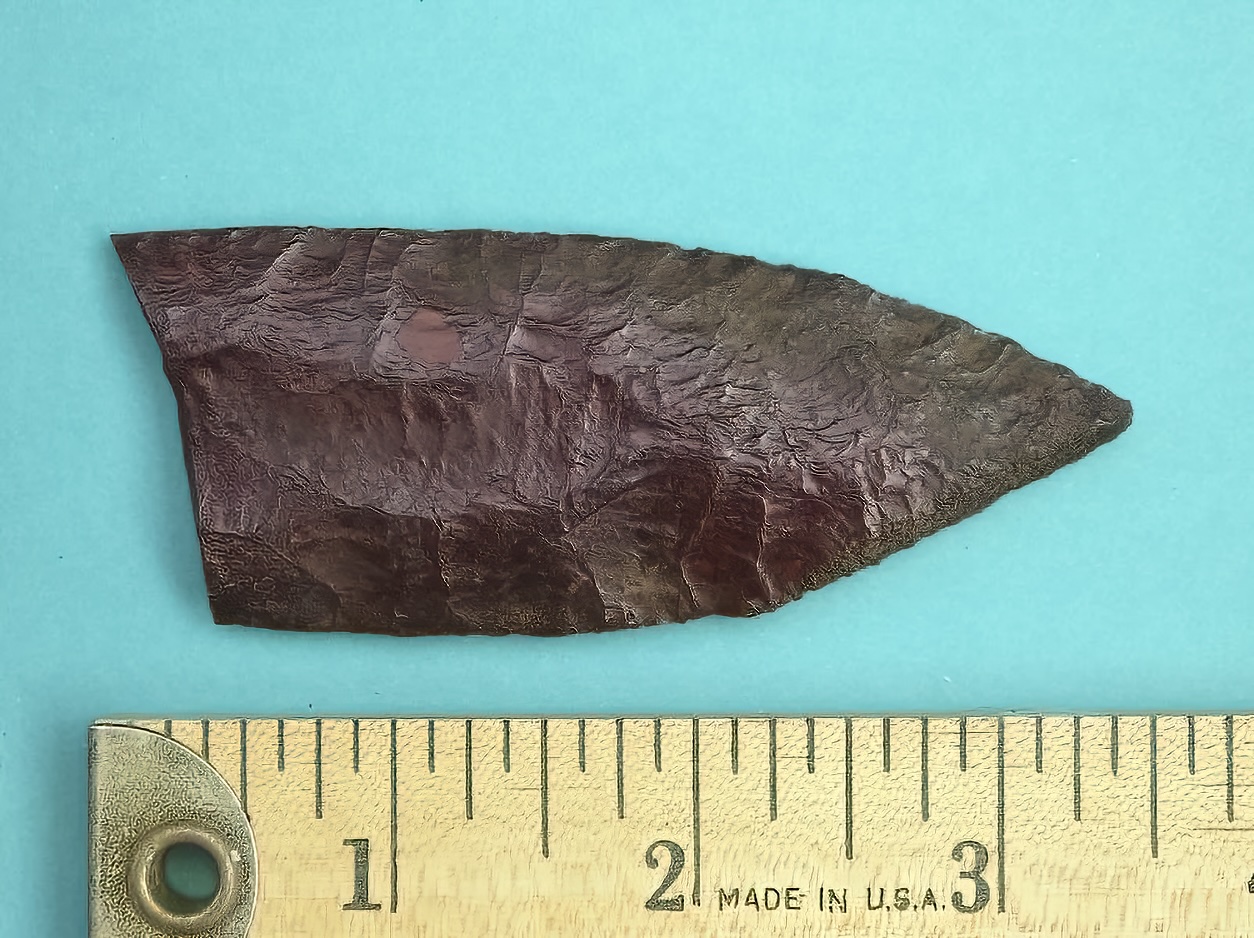
When Dr. Hudson visited Silver Beach in June of 2006 with a crew and gear necessary to survey the underwater site, they soon found more of the huge bull’s skeleton. And they noticed something intriguing. On several of the bones, they saw tiny slashes that could only have been man-made. Butcher marks from ancient hunters. The scapula, much bigger than an average modern elk scapula, emerged from the sand. The two clear holes punched clean through the bone. The holes matched the size of the spearpoint exactly.
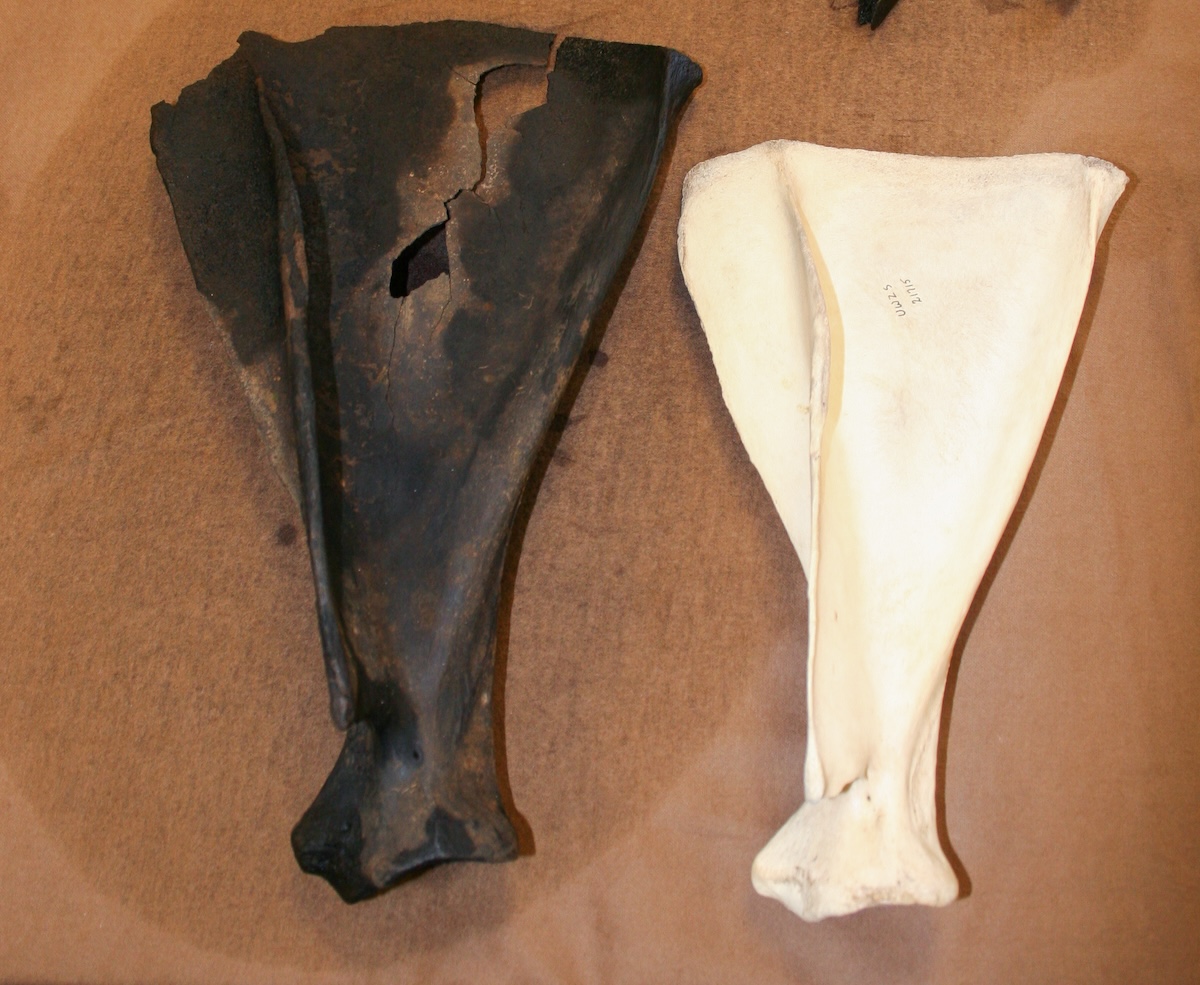
The most likely scenario from 500 years ago was that the bull was struck by the spears and immobilized on the frozen lake surface. It was then butchered on the spot, and with the spring thaw, the bones settled on the bottom together in a tight group. Missing from the skeleton is one entire rear quarter and most of the other; possibly taken back to the hunter’s camp whole by members of the party while the others stayed to do the fine work of removing every useful bit of the animal.
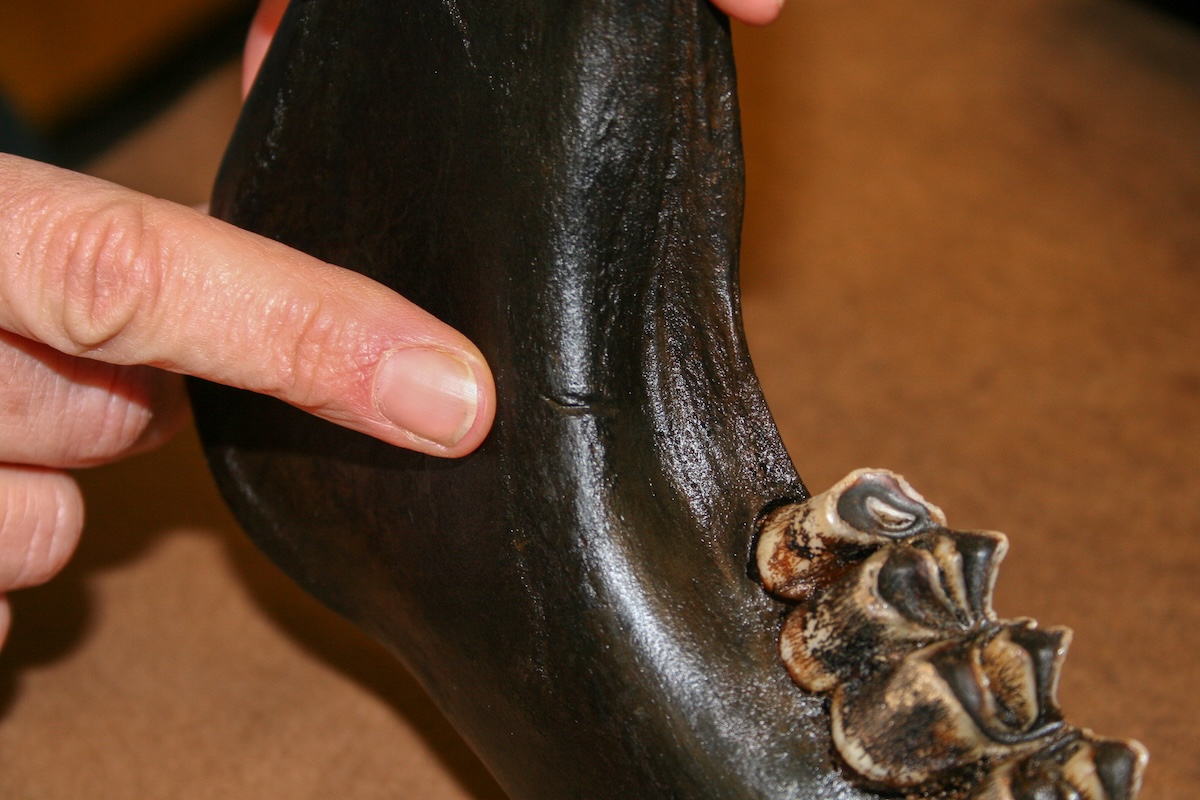
All told, there are cut marks in nine different places on the bones, including cuts on the right lower jaw and the bridge of the nose. In addition to the holes in the scapula created by two spears, there are wounds on two ribs directly behind the scapula. The power with which those spears were thrown was immense, but the accuracy was most impressive. The ancient hunters knew exactly where to hit the animal to bring it down on the spot, and both spears hit within four inches of each other.
This astonishing accuracy with a throwing spear was not unique to these northern Wisconsin hunters. Archaeological evidence from kill sites around the world show that ancient people consistently hit large game in that same spot on the shoulder blade, knowing it would quickly immobilize the animal.
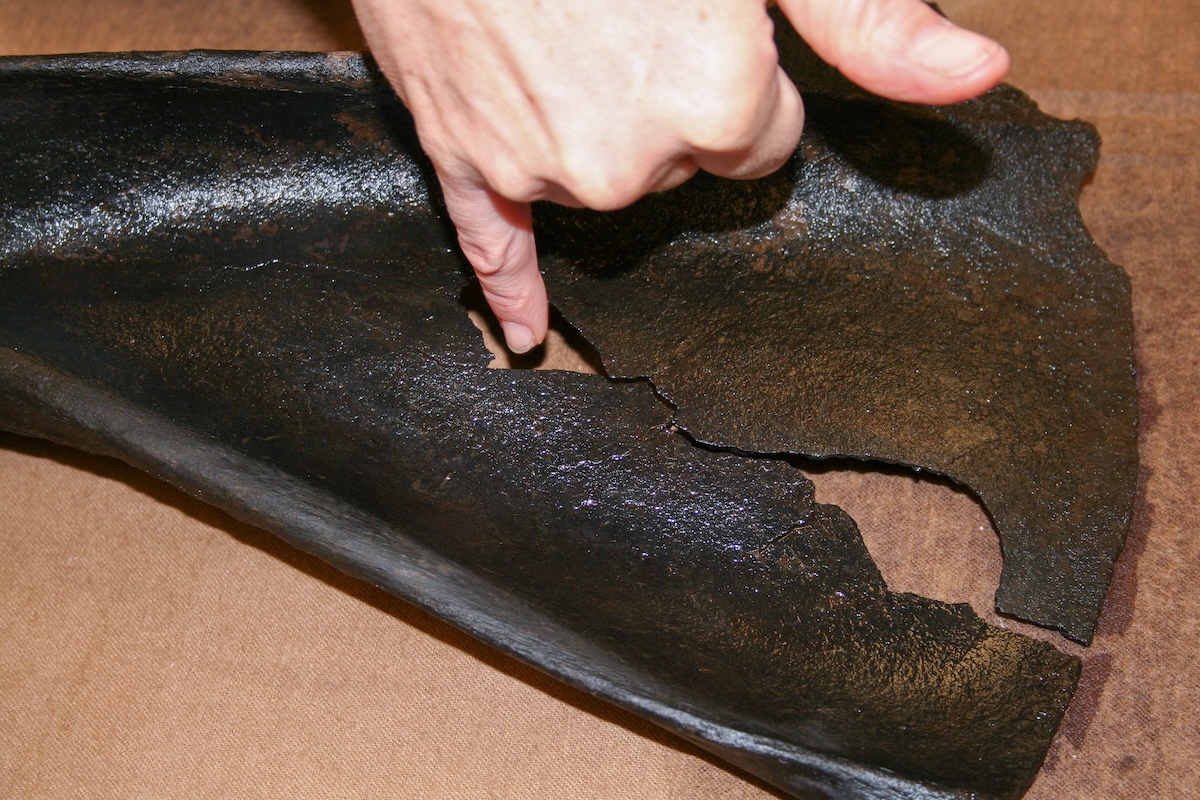
At the Silver Beach Kill site, as it became known officially, there was one more mystery. That broken spearpoint found with the elk bones was a large, fluted projectile. What remained of the point was nearly four inches long and finely crafted. But it was a Gainey (Clovis-type) point of a style much, much older than the five-century-old kill.
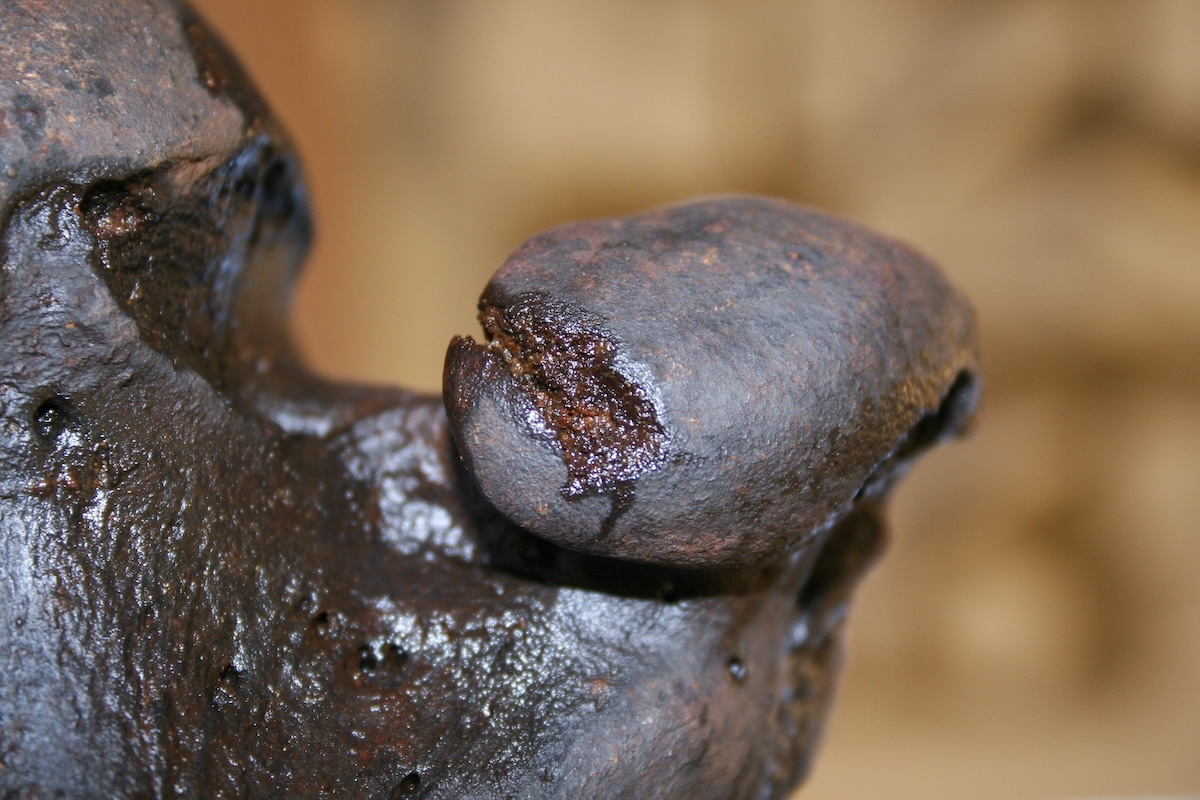
Was it mere chance that a projectile that dates to approximately 11,000 years ago was found with the carbon-dated 500-year-old elk remains? That would be some coincidence.
Or was it a repurposed point, held onto and handed down for thousands of years, from hunter to hunter to hunter? The romantic in me likes to think so.
The Silver Beach elk remains are currently on display at the Barnes Area Historical Society Museum in Barnes, Wisconsin, near where they were discovered. The antlers were Boone & Crockett scored (unofficially) at 354⅜”. The current location of the spearpoint is not known.
Read the full article here

